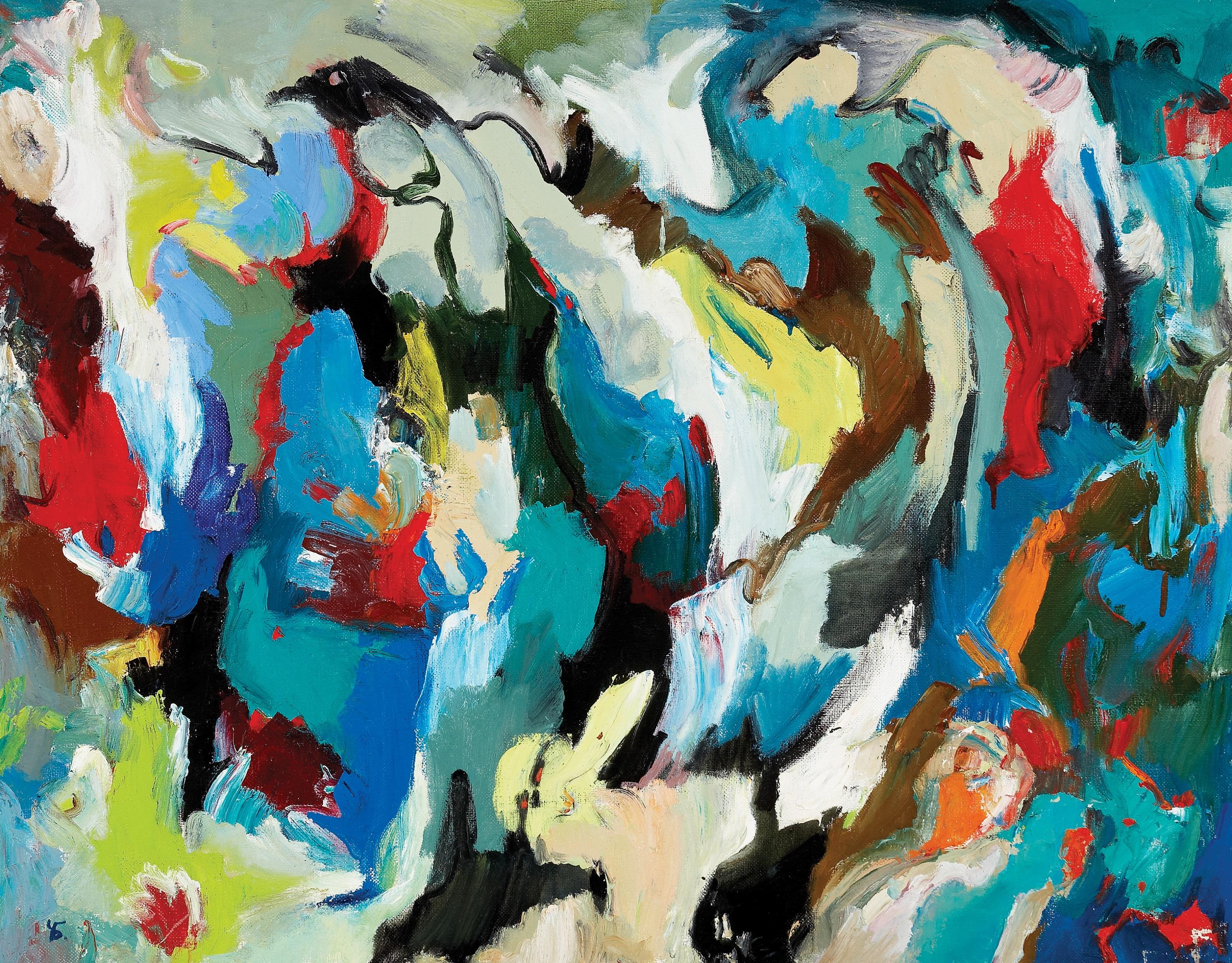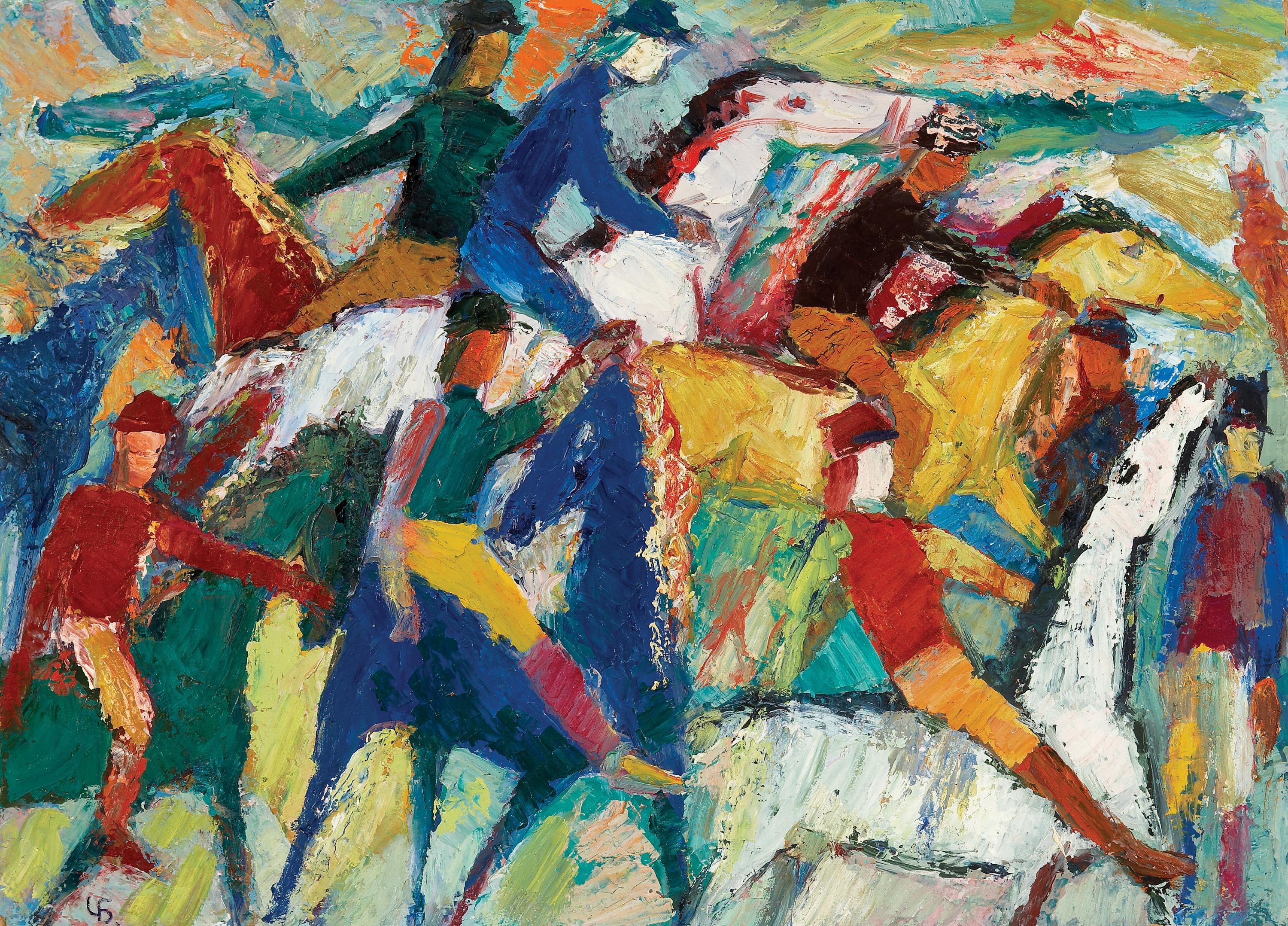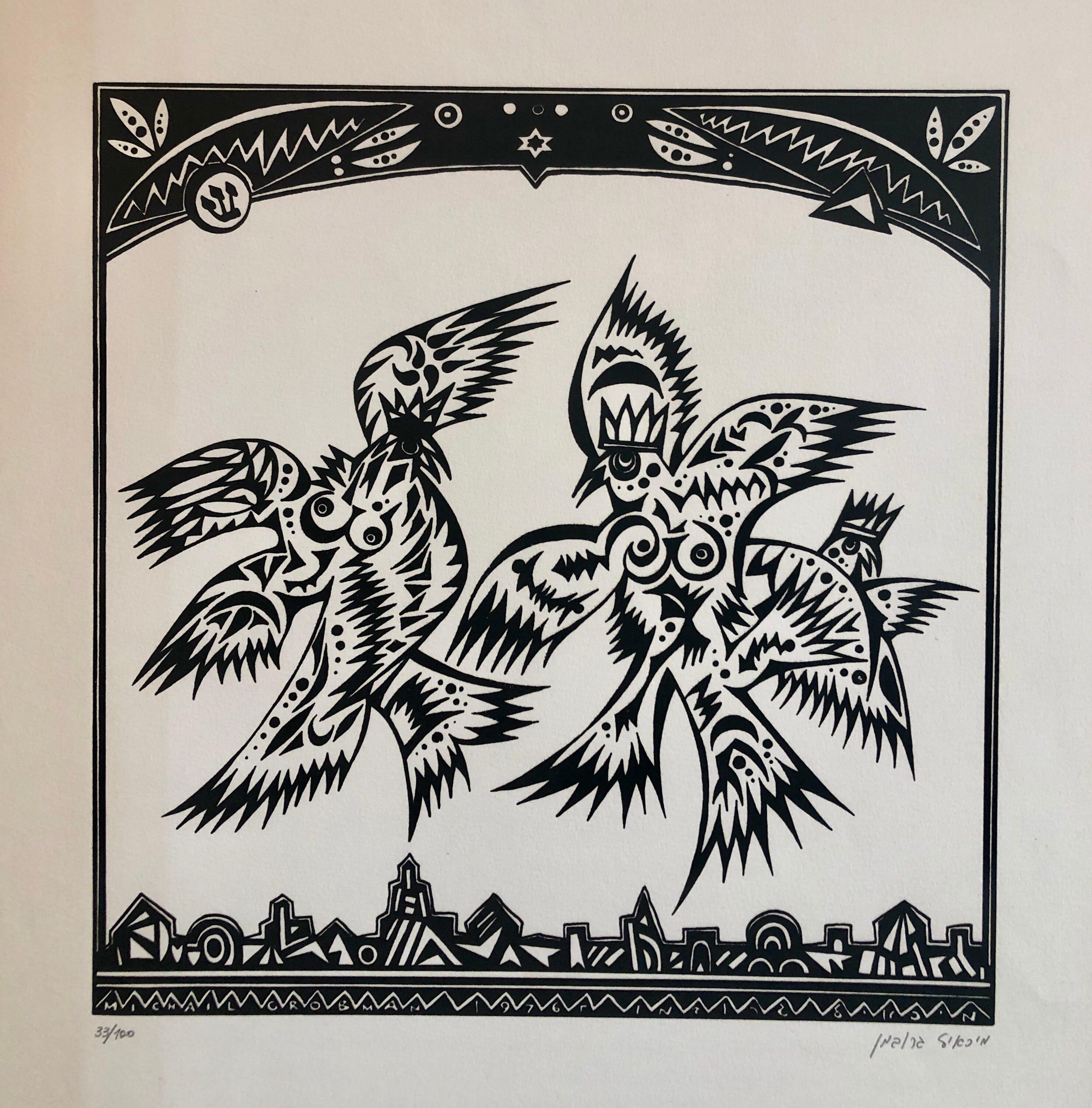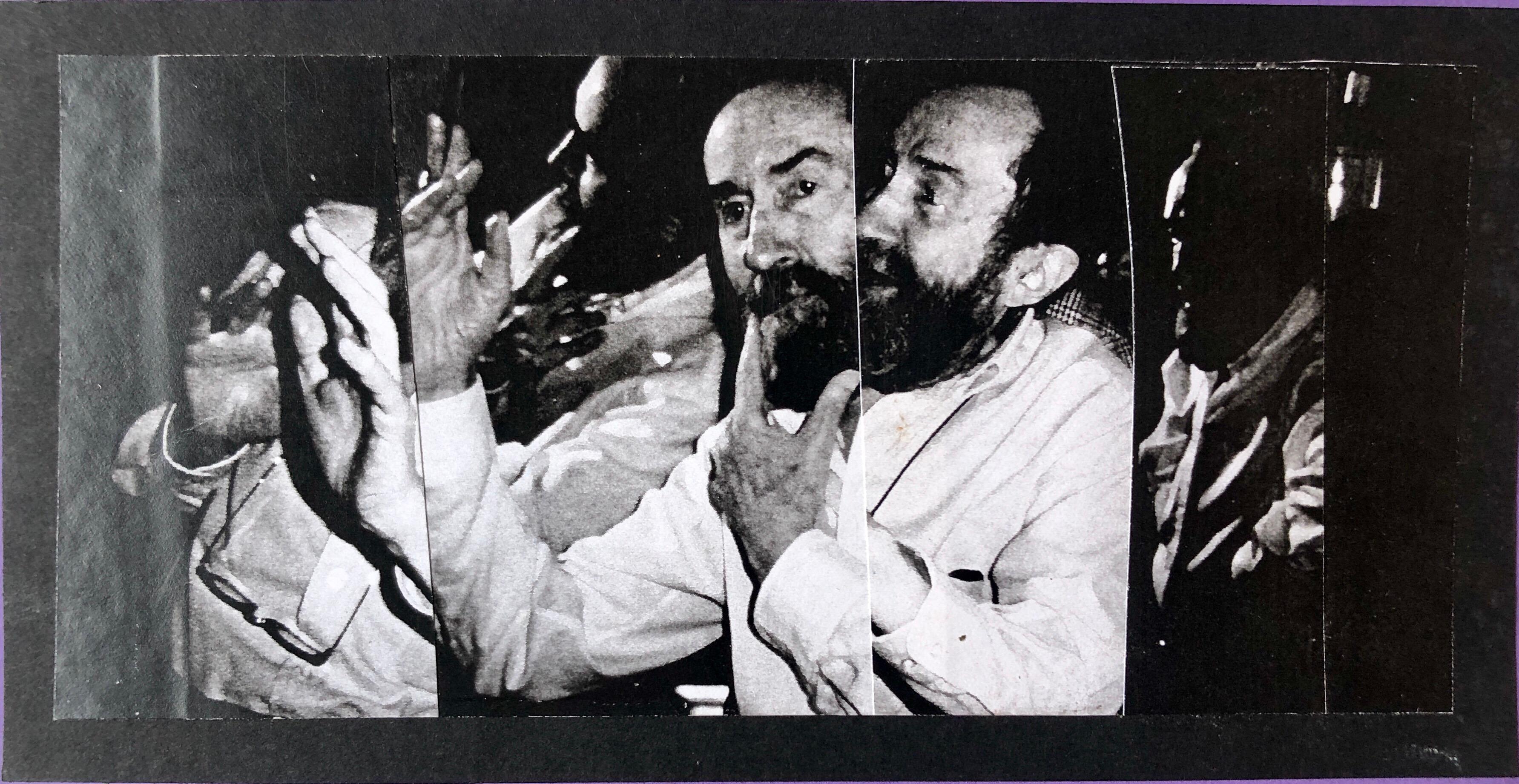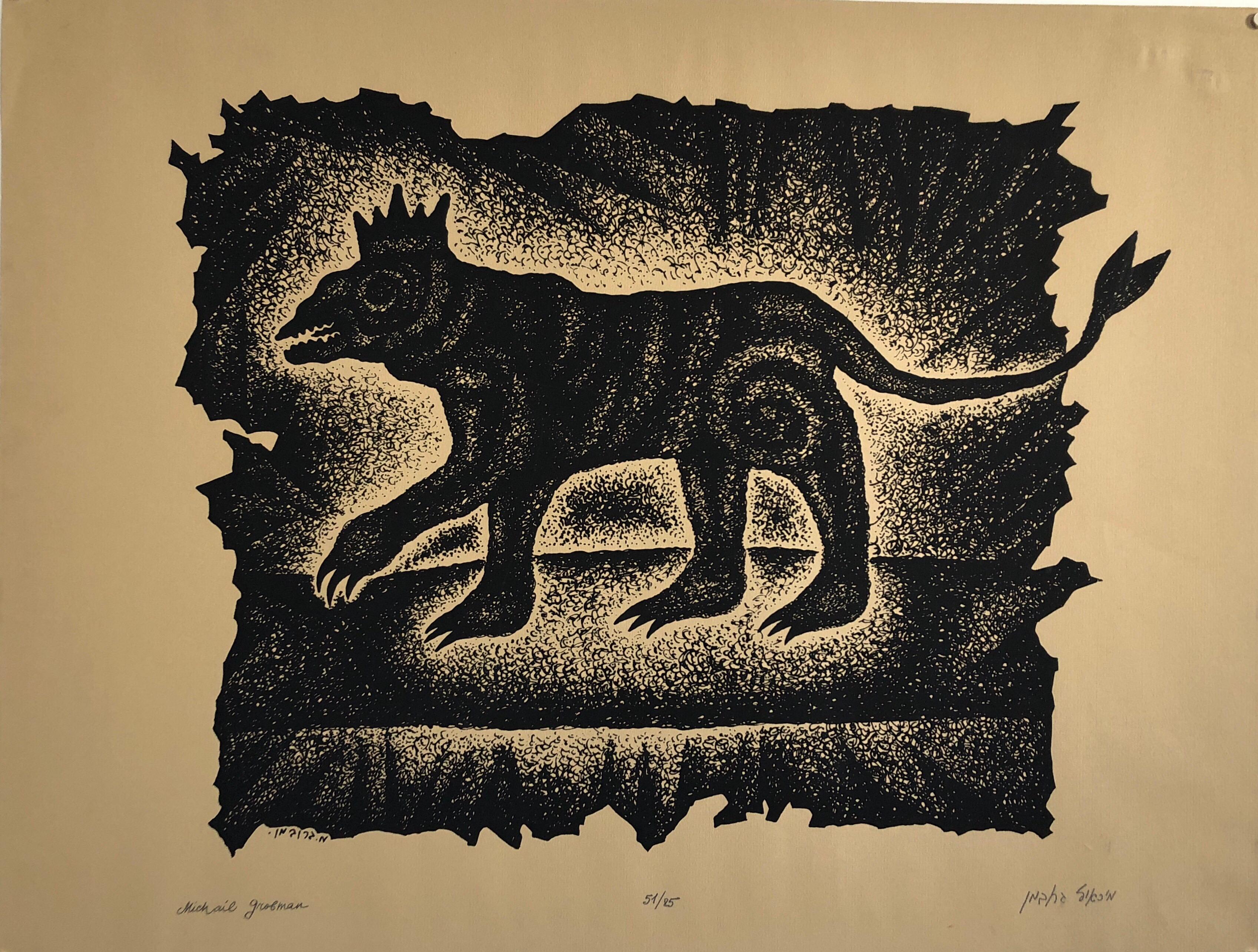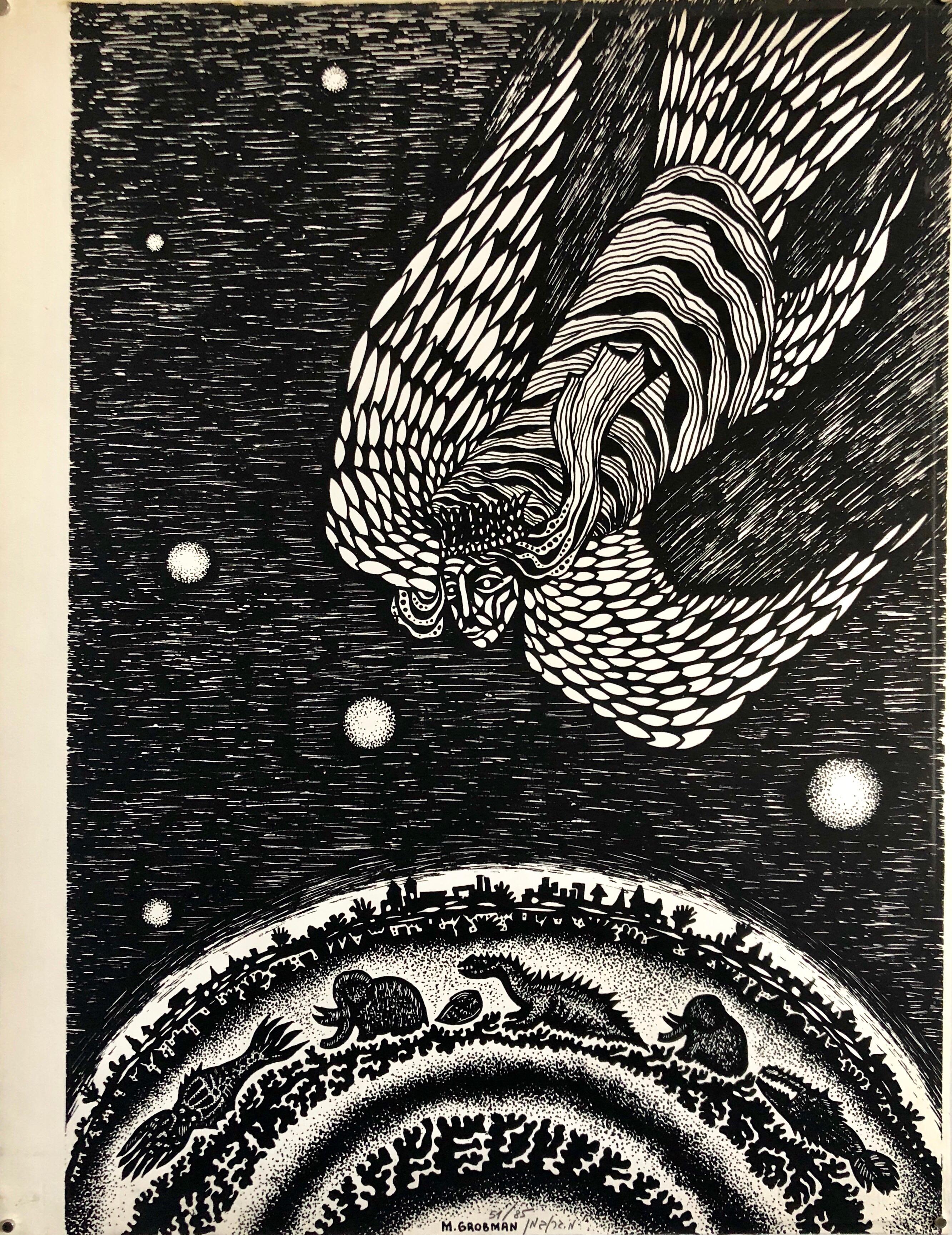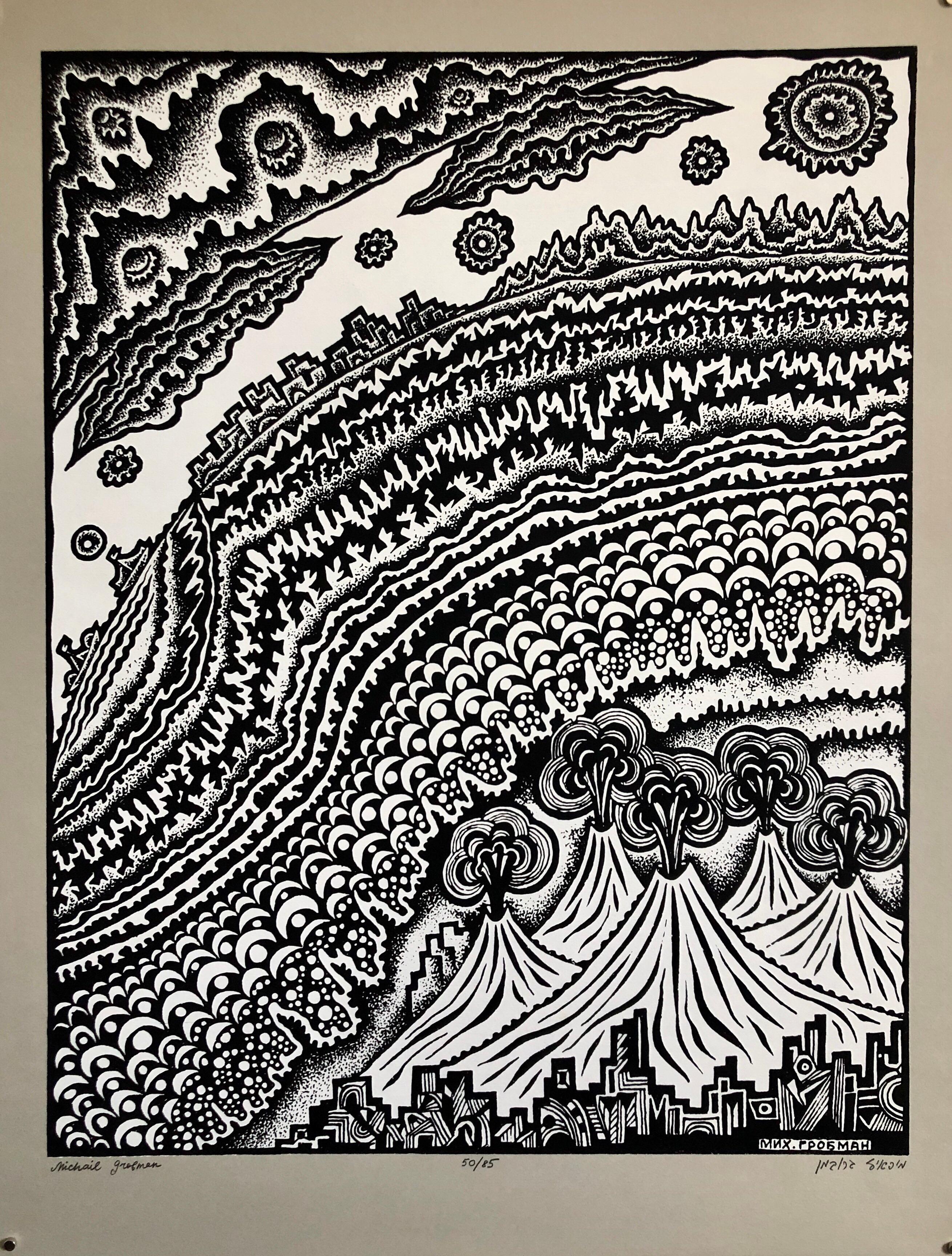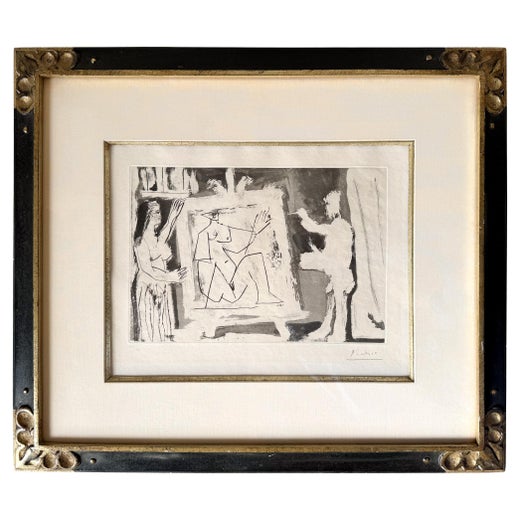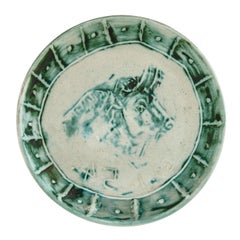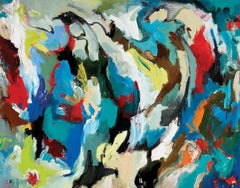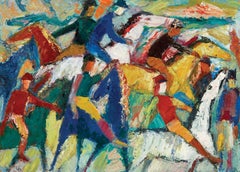
Pablo Picasso 'Tête de chèvre de profil' A. R. 151
View Similar Items
Pablo PicassoPablo Picasso 'Tête de chèvre de profil' A. R. 1511952
1952
About the Item
- Creator:Pablo Picasso (1881-1973, Spanish)
- Creation Year:1952
- Dimensions:Height: 16.63 in (42.25 cm)Diameter: 16.63 in (42.25 cm)
- Medium:
- Movement & Style:
- Period:
- Condition:
- Gallery Location:Miami, FL
- Reference Number:1stDibs: LU97935431611
Pablo Picasso
One of the most prolific and revolutionary artists the world has ever seen, Pablo Picasso had a tremendous impact on the development of 20th-century modern art. Although he is best known for his association with the Cubist movement, which he founded with Georges Braque, Picasso’s influence extends to Surrealism, neoclassicism and Expressionism.
“Every act of creation is, first of all, an act of destruction,” the Spanish artist proclaimed. In Picasso's Cubist paintings, he emphasizes the two-dimensionality of the canvas, breaking with conventions regarding perspective, foreshortening and proportion. Picasso was inspired by Iberian and African tribal art. One of his most famous pre-Cubist works is Les Demoiselles d’Avignon (1907), a painting considered immoral and shocking at the time for its depiction of nude women whose faces resemble Iberian tribal masks.
Picasso made many portraits in this style, most often of the women in his life, their expressively colored faces composed of geometric shards of surface planes. In Woman in a Hat (Olga), 1935, he painted his first wife as an assemblage of abstract forms, leaving the viewer to decipher the subject through the contrasting colors and shapes. Picasso was a tireless artist, creating more than 20,000 paintings, drawings, prints, ceramics and sculptures. Tracing his life’s work reveals the progression of modern art, on which he had an unparalleled influence.
Browse an expansive collection of Pablo Picasso's art on 1stDibs.

- Pablo Picasso 'Tête de taureau' A. R. 232By Pablo PicassoLocated in Miami, FLPABLO PICASSO (1881-1973) Tête de taureau (A. R. 232) Terre de faïence bowl, 1954, from the edition of 100, partially glazed and painted, with the M...Category
1950s Modern Abstract Prints
MaterialsCeramic, Earthenware, Glaze
- Pablo Picasso 'Oiseau polychrome' A. R. 33By Pablo PicassoLocated in Miami, FLPABLO PICASSO (1881-1973) Oiseau polychrome (A. R. 33) Terre de faïence plate, painted in colors and glazed, 1947, numbered 26/200 and incised 'I 106', with the Edition Picasso an...Category
1940s Abstract Animal Prints
MaterialsCeramic, Earthenware
- Pablo Picasso 'Picador' (A. R. 160) Bullfighter Madoura Plate 1952By Pablo PicassoLocated in Miami, FLPABLO PICASSO (1881-1973) Picador (A. R. 160) Terre de faïence plate, 1952, from the edition of 500, incised 'Edition Picasso', partially glazed and painted, with the Edition Pica...Category
1950s Modern Animal Prints
MaterialsCeramic
- Pablo Picasso 'Sylvette' A. R. 267By Pablo PicassoLocated in Miami, FLPABLO PICASSO (1881-1973) Sylvette (A. R. 267) Terre de faïence bowl, 1955, from the edition of 100, partially glazed and painted, with the Madoura and Empreinte Originale de Picas...Category
1960s Modern Abstract Prints
MaterialsCeramic, Earthenware
- Pablo Picasso 'Visage No. 72' A. R. 474By Pablo PicassoLocated in Miami, FLPABLO PICASSO (1881-1973) Visage No. 72 (A. R. 474) Terre de faïence plate, 1963, titled, numbered 51/150, inscribed 'Edition Picasso' and 'Madoura', glazed and painted.Category
1960s Modern Abstract Prints
MaterialsCeramic, Earthenware
- Pablo Picasso Madoura 'Hibou brillant' (A. R. 285) Owl Ceramic PlateBy Pablo PicassoLocated in Miami, FLPABLO PICASSO (1881-1973) Hibou brillant (A. R. 285) Terre de faïence dish, 1955, from the edition of 450, glazed and painted, with the Edition Picas...Category
1950s Modern Abstract Prints
MaterialsCeramic, Earthenware
- Penguin MigrationLocated in Santa Fe, NMPENGUIN MIGRATION This hand crafted Giclee print on canvas of 'Penguin Migration', by Boris Chetkov, provides the opportunity to own and enjoy a Chetkov masterpiece at a very afford...Category
1990s Abstract Expressionist Abstract Prints
MaterialsGlaze, Gesso, Giclée
- BarkhansLocated in Santa Fe, NMBARKHANS This hand crafted Giclee print on canvas, 'Barkhans', by Boris Chetkov, provides the opportunity to own and enjoy a Chetkov masterpiece at a very affordable price. Beaut...Category
Early 2000s Abstract Expressionist Abstract Prints
MaterialsGlaze, Giclée
- Before the RaceLocated in Santa Fe, NMThis hand crafted Giclee print on canvas, 'Before the Race', by Boris Chetkov, provides the opportunity to own and enjoy a Chetkov masterpiece at a very affordable price. Produced to the exact size of the original work and beautifully textured with a clear gesso finish following Chetkov’s distinctive brushwork, this reproduction was exclusively authorized by the artist and is currently available only on 1stDibs. "The horse plays a prominent role in Chetkov’s oeuvre, symbolizing youth, freedom and the flight of time, always conveying a sense of energy and animation. He related closely with Kandinsky who famously noted, “Color is the keyboard, the eyes are the hammers, the soul is the piano with many strings. The artist is the hand that plays, touching one key or another purposely, to cause vibrations to the soul." Theodora Clarke, Russian Art Scholar, Courtauld Institute of Art From 1995 until 2014 when Russia invaded Crimea, (at which time cultural exchange largely came to an end) the Pushkin Gallery...Category
1980s Abstract Expressionist Abstract Prints
MaterialsGiclée, Glaze
- Hybrid FertilityBy Jane Martin VonBosseLocated in Storrs, CT11 3/4 x 8 5/8 (sheet 12 1/4 x 16). Edition 20, #5. A fine impression printed on green Ingres d'Arches laid paper. Signed, titled and numbered in pencil. Housed in a 20 x 16-inch ar...Category
Mid-20th Century American Modern Abstract Prints
MaterialsLinocut
$120 Sale Price46% Off - Post Soviet Nonconformist Avant Garde Russian Israeli Woodcut Woodblock PrintBy Michail GrobmanLocated in Surfside, FLWoodcut woodblock (small possibility it is a Silkscreen Serigraph) print hand signed, numbered. Michail Grobman (Russian: Михаил Гробман, Hebrew: מיכאיל גרובמן, born 1939) is an a...Category
20th Century Modern Animal Prints
MaterialsWoodcut
- Vintage Abstract Expressionist Hyman Bloom Photo Collage Assemblage PhotographBy Martin SumersLocated in Surfside, FLThis is a unique original collage, decoupage style of Jiri Kolar, This is an exceptional artwork which was part of a collaboration between Hyman Bloom and fellow artist and his very good friend Martin Sumers. This is pencil signed by Martin Sumers. Provenance: Acquired from the Sumers estate collection. Hyman Bloom (March 29, 1913 – August 26, 2009) was a Latvian-born American painter. His work was influenced by his Jewish heritage and Eastern religions as well as by artists including Altdorfer, Grünewald, Caravaggio, Rembrandt, Blake, Bresdin, James Ensor and Chaim Soutine. He first came to prominence when his work was included in the 1942 Museum of Modern Art exhibition "Americans 1942 -- 18 Artists from 9 States". MoMA purchased 2 paintings from the exhibition and Time magazine singled him out as a "striking discovery" in their exhibition review. His work was selected for both the 1948 and 1950 Venice Biennale exhibitions and his 1954 retrospective traveled from Boston's Institute of Contemporary Art to the Albright Gallery and the de Young Museum before closing out at The Whitney Museum of American Art in 1955. In a 1954 interview with Yale art professor Bernard Chaet, Willem de Kooning indicated that he and Jackson Pollock both considered Bloom to be “America’s first abstract expressionist”, a label that Bloom would disavow. Starting in the mid 1950s his work began to shift more towards works on paper and he exclusively focused on drawing throughout the 1960s, returning to painting in 1971. He continued both drawing and painting until his death in 2009 at the age of 9 Hyman Bloom (né Melamed) was born into an orthodox Jewish family in the tiny Jewish village of Brunavišķi in what is now Latvia, then part of the Russian Empire At a young age Bloom planned to become a rabbi, but his family could not find a suitable teacher. In the eighth grade he received a scholarship to a program for gifted high school students at the Museum of Fine Arts. He attended the Boston High School of Commerce, which was near the museum. He also took art classes at the West End Community Center, a settlement house. The classes were taught by Harold Zimmerman, a student at the School of the Museum of Fine Arts, who also taught the young Jack Levine at another settlement house in Roxbury. When Bloom was fifteen, he and Levine began studying with a well-known Harvard art professor, Denman Ross, who rented a studio for the purpose and paid the boys a weekly stipend to enable them to continue their studies rather than take jobs to support their families. He took Bloom and Levine on a field trip to the Museum of Modern Art in New York, where Bloom was impressed by the work of Rouault and Soutine and began experimenting with their expressive painting styles. In the 1930s Bloom worked sporadically for the Public Works of Art Project and the Federal Art Project (WPA), He shared a studio in the South End with Levine and another artist, Betty Chase. It was during this period that he developed a lifelong interest in Eastern philosophy and music, and in Theosophy. He first received national attention in 1942 when thirteen of his paintings were included in the Museum of Modern Art (MoMA) exhibition Americans 1942: 18 Artists from 9 States, curated by Dorothy Miller. MoMA purchased two of his paintings from that exhibition, and he was featured in Time magazine. The titles of his paintings in the exhibition reflect some of his recurring themes. Two were titled The Synagogue, another, Jew with the Torah; Bloom was actually criticized by one reviewer for including "stereotypical" Jewish images. He also had two paintings titled The Christmas Tree, and another titled The Chandelier, both subjects he returned to repeatedly. Another, Skeleton (c. 1936), was followed by a series of cadaver paintings in the forties, and The Fish (c. 1936) was one of many paintings and drawings of fish he created over the course of his career. Bloom was associated at first with the growing Abstract Expressionist movement. Willem de Kooning and Jackson Pollock, who first saw Bloom's work at the MoMA exhibition, considered Bloom "the first Abstract Expressionist artist in America." In 1950 he was chosen, along with the likes of de Kooning, Pollock, and Arshile Gorky, to represent the United States at the Venice Biennale. That same year Elaine de Kooning wrote about Bloom in ARTnews, noting that in paintings such as The Harpies, his work approached total abstraction: "the whole impact is carried in the boiling action of the pigment". In 1951 Thomas B. Hess reproduced Bloom's Archaeological Treasure in his first book, Abstract Painting: Background and American Phase, along with works by Picasso, Pollock, and others. Both de Kooning and Hess remarked on Bloom's expressive paint handling, a key characteristic of Abstract Expressionist painting. As abstract expressionism dominated the American art world, Bloom became disenchanted with it, calling it "emotional catharsis, with no intellectual basis." In addition, instead of moving to New York to pursue his career, he opted to stay in Boston. As a result he fell out of favor with critics and never achieved the kind of fame that Pollock and others did. He disliked self-promotion and never placed much value on critical acclaim. Many of Bloom's paintings feature rabbis, usually holding the Torah. According to Bloom, his intentions were more artistic than religious. He began questioning his Jewish faith early in life, and painted rabbis, he claimed, because that was what he knew. Over the course of his career he produced dozens of paintings of rabbis...Category
20th Century Modern Animal Prints
MaterialsPaper, Photographic Paper
Recently Viewed
View AllRead More
Science Uncovers Hidden Truths behind Young Pablo Picasso’s Blue Period
From 1901 to 1904, Picasso limited his palette to bluish hues in producing some of his most famous early works. A new show looks at the recycled materials, hidden underpaintings, surprising influences and bohemian lifestyle that led to their creation.
Who Are the Most Popular Artists on 1stdibs?
Learn the stories of some of the world's most recognizable artworks and their makers.
